If you really want to get away from it all, then the Channel Island of Alderney is definitely a candidate. It’s not easy to get to, as the only connection is a flight from Guernsey although there are plans to restart the ferry service. Don’t expect bright lights and big city, but wallow in the peace and quiet, take healthy walks and enjoy the excellent seafood.
The island is tiny, around 4 miles long and 1.5 miles wide and, as the northernmost Channel Island, midway between France and England, it’s always been of strategic importance. Its history as a fortress dates from Roman times, but most of the fortifications were built in the 19th century to deter attacks from the French.
German invasion in WW2
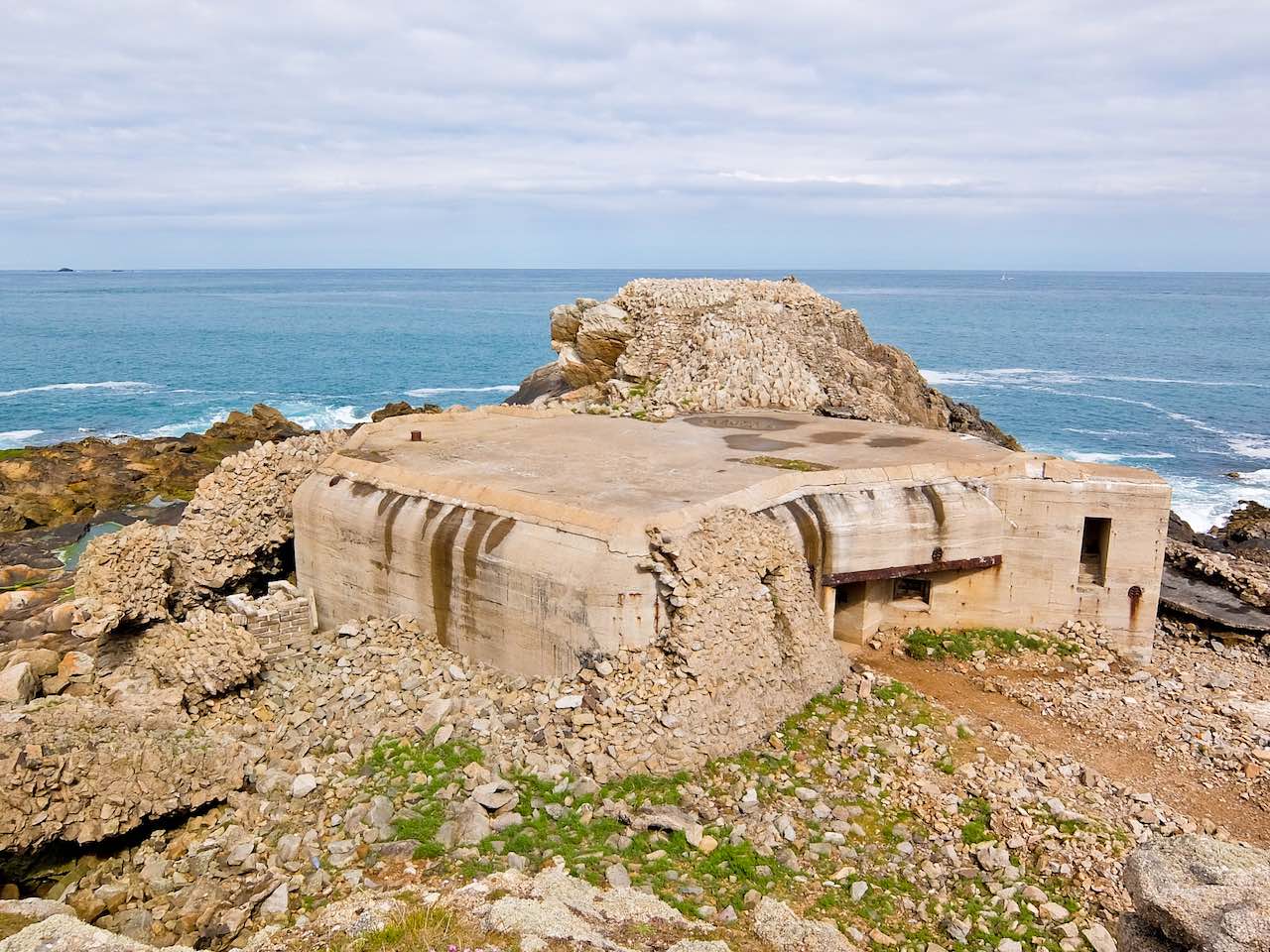
German Bunker (c) Rupert Parker
When the Germans invaded in WW2 they expelled the population and replaced them with thousands of slave labourers. They were put to work building Hitler’s Atlantic Wall, a network of bunkers, batteries and watch towers, designed to defend the English Channel. 70 years after the end of the war, most of these are still intact, and they’re now officially recognised as part of the island’s cultural heritage.
St Anne
St Anne, Alderney’s diminutive capital, is really just a couple of cobbled streets, bursting with history. The island began to prosper as a refuge for privateers, government sponsored pirates, in the early 18th century. The Le Mesurier family, from Guernsey, became heredity governors, running the place as their private fiefdom.
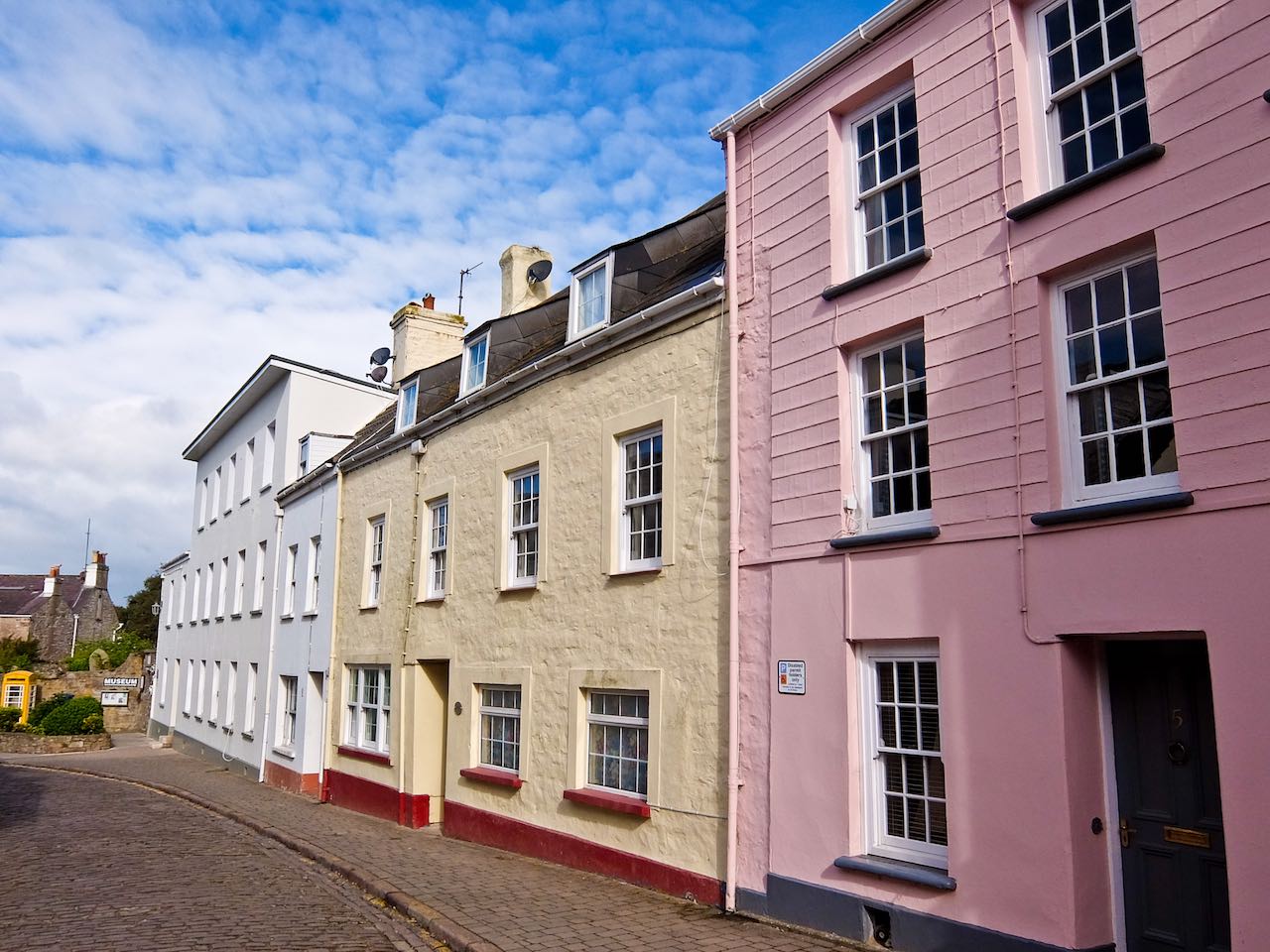
St Anne (c) Rupert Parker
This lasted until the end of the Napoleonic Wars when privateering was ended and smuggling suppressed, and the last Le Mesurier handed the island to the crown. There’s an excellent museum in St Anne which, as well as dealing with the early history, has many artefacts from the German occupation.
The coastal path
I take the coastal path round the island, well signed and an easy day’s walk. If you want to explore the fortifications, it’s better to spend a couple of days, the first going west of St Anne and the second day walking east. Alderney’s population has been shrinking and most live in St Anne so it’s an entirely rural exercise.
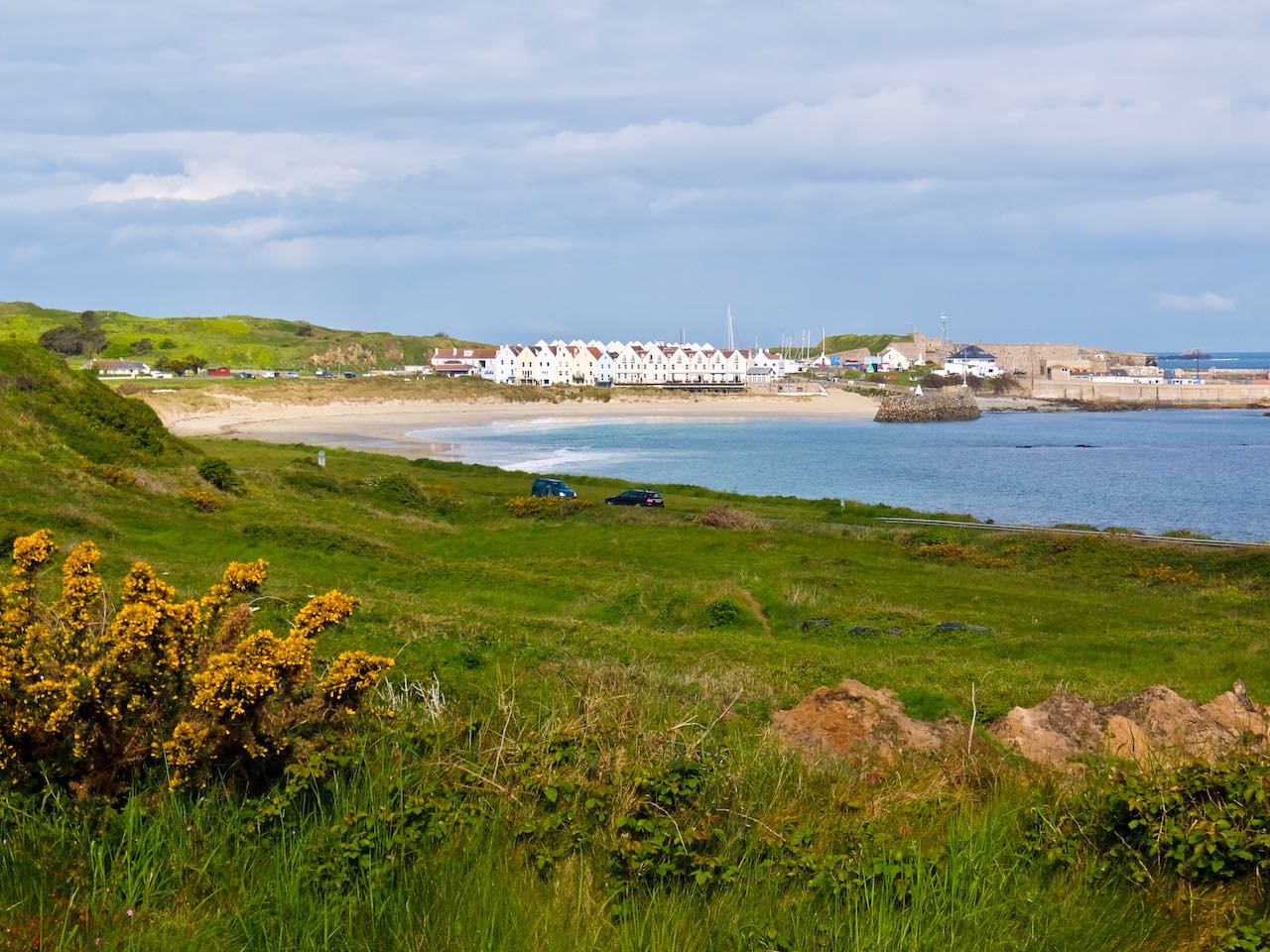
Braye Beach (c) Rupert Parker
Starting at Braye Harbour, I follow my nose west and find deserted beaches and reach Fort Tourgis, the largest of the Victorian fortresses. Most of it is dangerously dilapidated but Cambridge Battery has been restored and you can see how the original Victorian fortifications were adapted by the Germans. There are plans for a self-contained luxury resort here, but locals scoff at the idea.

Fort Tourgis (c) Rupert Parker
At the Western end of the island is Fort Clonque, connected to the mainland by a causeway. It’s now owned by the Landmark Trust and is available for rent. Further on, near the airport, I pass the site of the infamous Lager Sylt, one of the slave camps. This one was run by the S.S. and probably saw some of the worst atrocities on the island.
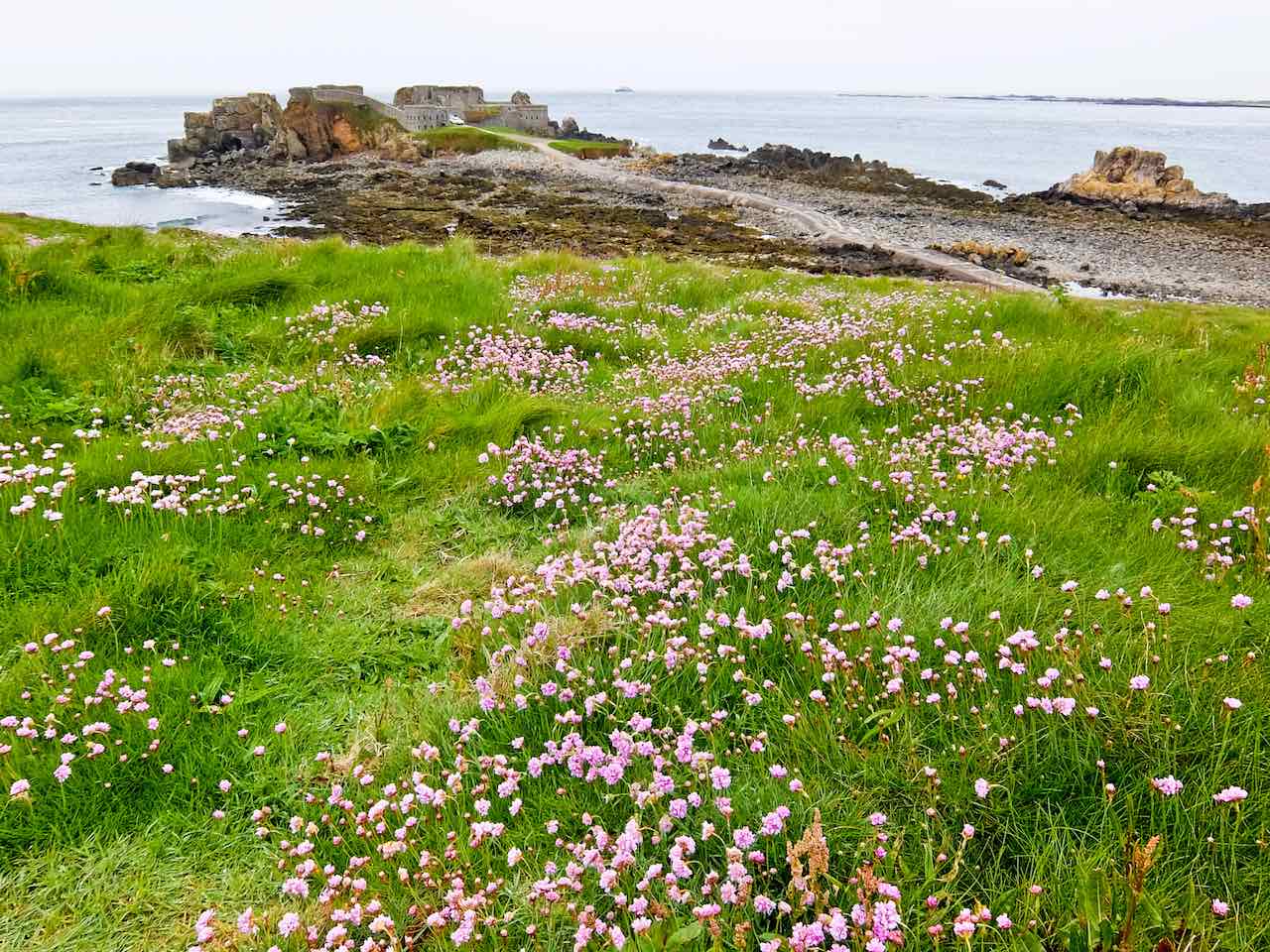
Fort Clonque (c) Rupert Parker
Continuing on the south coast, there are stunning views of cliffs and bays before reaching the Tudor ramparts of Fort Essex. Work started in the 1560s but the castle was never completed. In Victorian times it became a fortified barracks and military hospital and today has been converted into private dwellings.
Continuing east, towards the Lighthouse, on the hill to the left is a German Anti-Aircraft watch tower known as the Odeon for its resemblance to old cinemas. You need to get a key from the tourist office but from the top you get fantastic view over the island. As you might imagine it’s surrounded by bunkers and gun emplacements, all lost in the vegetation.
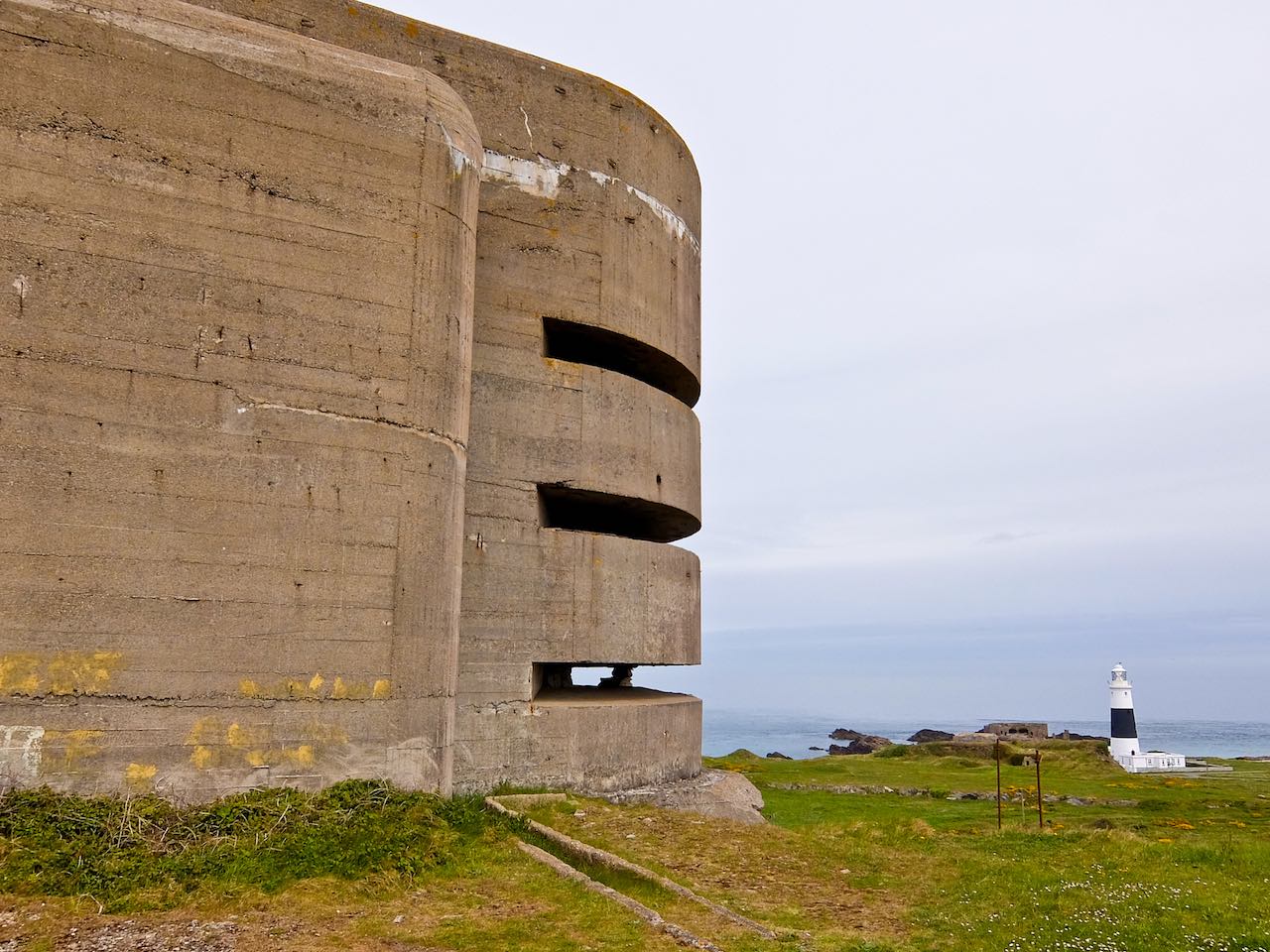
Alderney Odeon Anti-Aircraft Tower (c) Rupert Parker
After turning the corner by the Lighthouse and heading back it’s worth stopping at Bibette Head. Here there’s a mixture of Victorian and WW2 fortifications with informative sign boards. The land has been cleared and a number of bunkers are open for access. Of course this huge building effort was a complete waste of time – no attack came as Winston Churchill decided it was not worth losing lives for something of little military importance.
Bird watching in Burhou Island
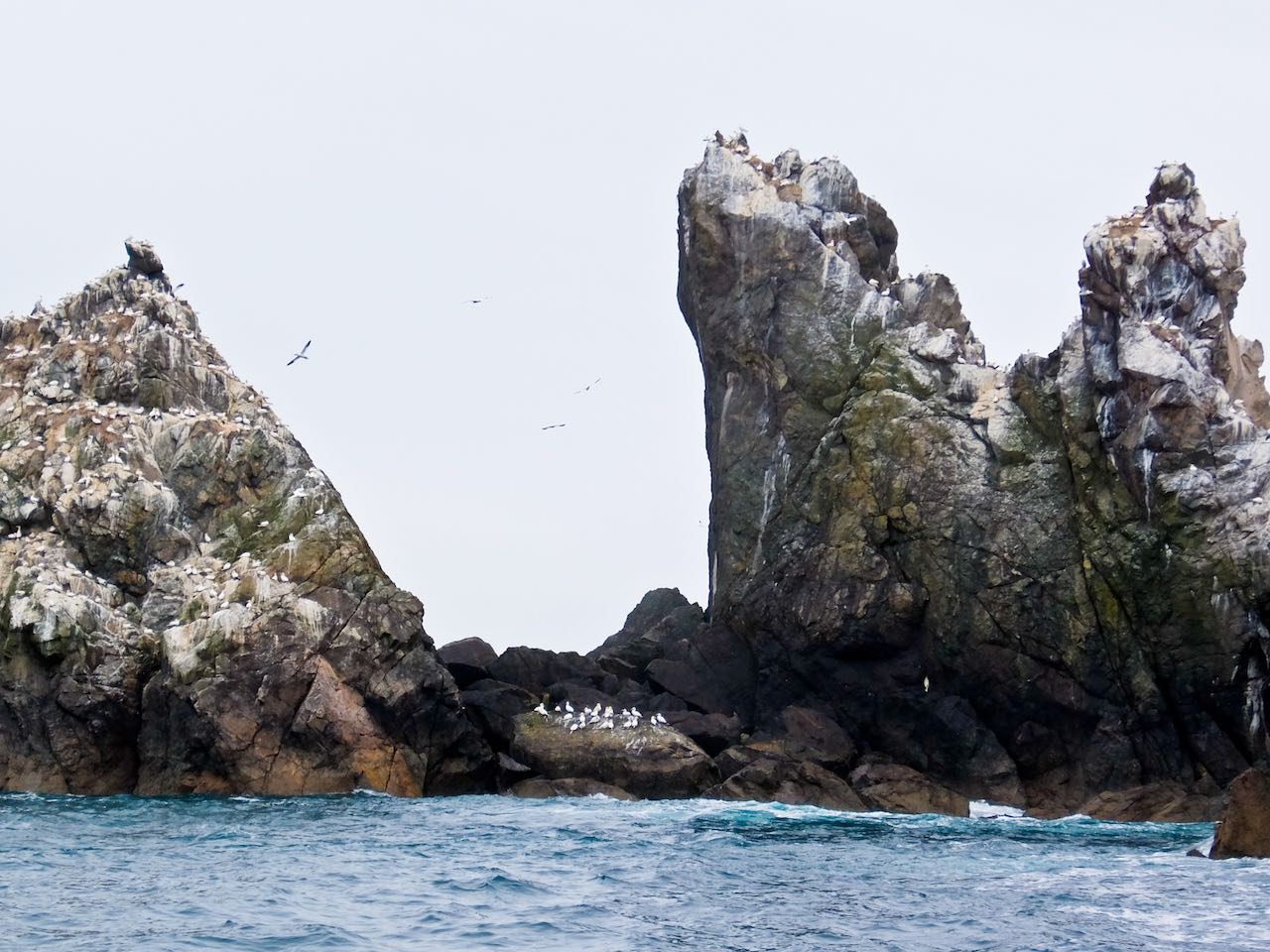
Gannet Rocks (c) Rupert Parker
Alderney is also a mecca for birders. It’s worth taking a boat out to Burhou Island, a sanctuary for 11 species of breeding birds. Puffins make their home here between March and July and this is the furthest south you’ll find them. There are impressive Gannet colonies on the Les Etacs and Ortac rocks, between them making up 2% of the world’s population. And don’t forget the basking Atlantic seals near Burhou Reef.
The only railway in the Channel Islands
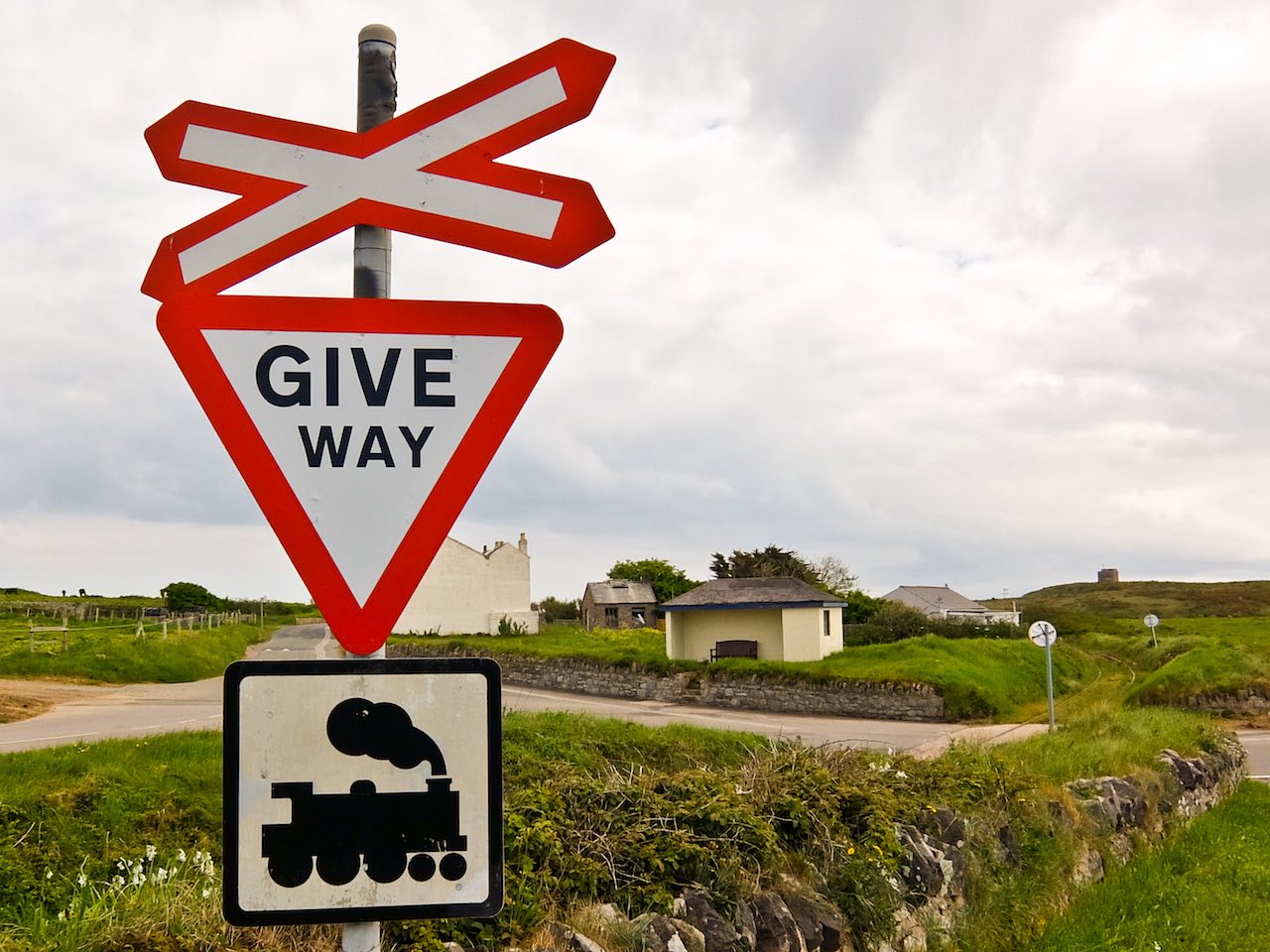
Train sign (c) Rupert Parker
The island has one final surprise in store – the only railway in the Channel Islands. It was built in the 1840s to transport stone from the eastern end of the Island to the harbour and the Victorian forts. The first official passengers, Queen Victoria and Prince Albert, were carried in a horse drawn tender on the 8th August 1854. These days royalty is long gone but, on summer weekends, vintage London Underground carriages carry tourists from Braye to Mannez, a distance of less than a 1km.
Fact File
FLY: Aurigny has daily, direct services to Alderney from Southampton and Guernsey. You can also fly to Guernsey from Bristol, Dinard, East Midlands, Grenoble, Leeds Bradford, London Gatwick, London Stansted, Manchester and Norwich, and take a connecting flight to Alderney.
STAY: Hotel de Havelet is a convenient place to stay in St Peter Port, Guernsey.
EAT: The Brasserie in the Old Government House Hotel and Spa has good food in a stylish setting.
Farm Court, in a quiet part of St Anne, is a comfortable B&B in Alderney.
The luxury boutique Braye Beach Hotel is right on the seafront and has an excellent restaurant.
Le Pesked serves authentic French food in the centre of St Anne.
WALKING FESTIVAL: The Guernsey Autumn Walking Festival takes place between 15 and 30 September.

